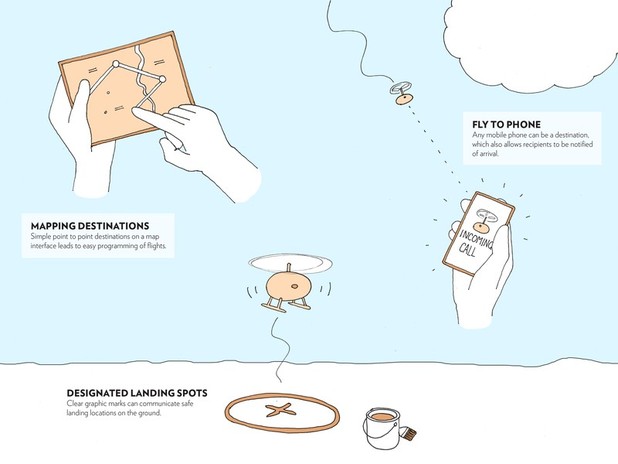February 03, 2014
Exploring ways to utilize drones towards last-mile health delivery, Adam Reineck and his IDEO.org team consider the different guidelines and principles surrounding navigation, interaction, and product design of drones in the developing world context.
Last week we posted a few ideas on how we might stop using the word drone, and instead create a family, or genus of different types of aerial robots. This week we’re looking into what it might be like to interact more naturally with these robots in the future, and some design constraints to take in consideration for their use in developing world contexts. We'll be adding to these and developing them in the coming weeks.
NAVIGATION GUIDELINES
Mapping Destinations - Simple point to point destinations on a map interface leads to easy programming of flights.
Fly to Phone - Any mobile phone can be a destination, and recipients should be notified of arrival.
Designated Landing Spots - Clear graphic marks can communicate safe landing locations on the ground.
INTERACTION PRINCIPLES
Maintains Distance - Sensors should be programmed to always create a safe flying distance from all obstacles.
Gesture Controlled - Upon arrival, the recipient should be able to control the UAVs with simple, intuitive hand movements.
PRODUCT DESIGN PRINCIPLES
Flexible - Should be able to switch between different power sources to simplify charging.
Repairable - Components should be simple in construction and easy to repair anywhere.
Modular - Should be customizable to different needs. Physical add-ons could program the robot to take on tasks related to new capabilities.
Adaptive - Changes in weight and construction due to repairs should not hinder flight ability.





